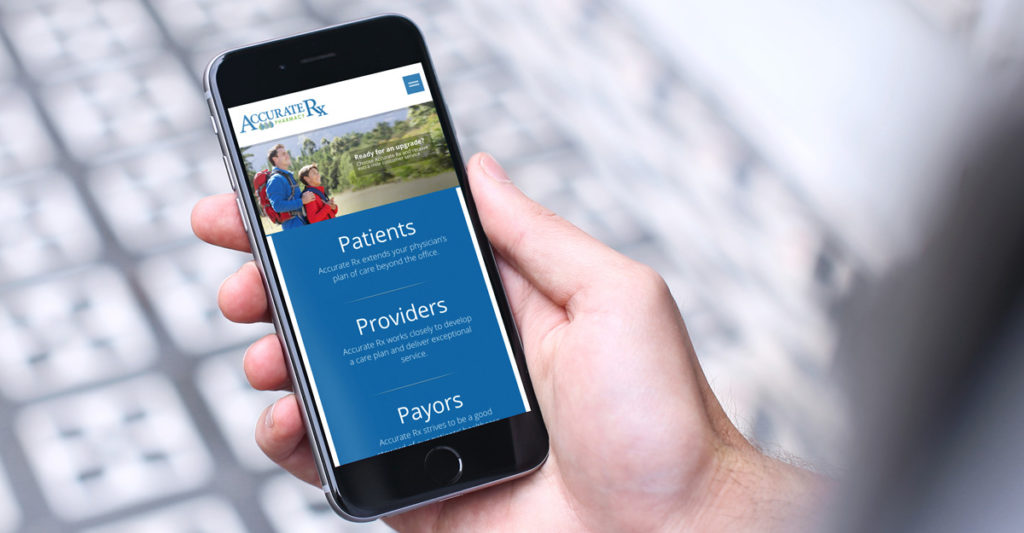It only takes a mere second for a visitor to leave your website if there is the slightest delay.
Bypass audience attrition and enhance lead conversion with the following practices for B2B website design. Continue Reading
It only takes a mere second for a visitor to leave your website if there is the slightest delay.
Bypass audience attrition and enhance lead conversion with the following practices for B2B website design. Continue Reading
One of your brand’s most prized assets is the company website. With interactive content and a dynamic layout, a functional website livens up your brand, creating engagement, leads and new avenues to explore.
Websites are one of the most affordable and powerful tools you can use to engage with and target your core audience— at least in theory.
Top notch non-profit website design requires the same level of professionalism as is expected of any business web design, especially when accepting donations or aiming to increase awareness.
How do non-profits justify the need for a web design budget?
In today’s world, people browse online when they want to learn more or contribute to a cause, so a powerful web presence is a must to help stand out. Continue Reading
Would you ask the kid in the mail room to represent you in court? Or hire someone with no experience to draw up blue prints for your new home? Most of us wouldn’t.
We would hire a professional, someone who can insure proper results. The same holds true when it comes to your business website design.
A professional designer knows the ins-and-outs of how to help you gain exposure online and will tailor your site to your business, ensuring new customers and returning visitors have a great experience.

So when it comes to online presences for professional services, such as accountants, architects, auditors, engineers, doctors and lawyers, here are 5 website must haves. Continue Reading
Choosing the right creative agency for your company is not always easy, especially when some specialize in certain industries for greater impact.
The right agency can help you increase your marketing game by bringing in a team of experts with a fresh perspective who know how to skillfully execute projects and campaigns, from website designs that work on all devices to video production that boosts social engagement.

Here are a few tips to consider when choosing the right agency for your project. Continue Reading
Finding a creative agency that fits perfectly with the needs of a client is one of the greatest challenges in the marketing process. Every agency has its specialties or industries it often works with, along with its unique qualifications and characteristics.
For many organizations, an RFP represents the best way to choose from among multiple vendors for a final interview and decision.

Having received and replied to a lot of RFPs over the years at Hub & Spoke, we thought we’d share a few tips on how to make it a smooth process.
1. Share Your Budget
It is a common notion that withholding your budget information increases competition among agencies and thus assuring you of better value. However, agencies have to consider the scale when looking to take on a project.
Withholding your budget information can lead to wasted time for both you and the agency in figuring out whether the relationship fits. Disclosing the budget information helps narrow down the field and ensures the right people respond.
2. Make your goals clear
When issuing an RFP for a St. Louis website design, you should consider clarifying the challenges you are likely to face and goals you have for the project.
Clearly outline the changes to the website and how you expect it to be organized. While you’re not expected to have a final plan of action, it’s still a good idea to establish a scope of work that the agency can use as a foundation for their estimate and their expected scope of work.
However, don’t be too rigid in your expectations. It’s okay to provide room for new ideas; that’s likely why you’re looking for help with your website design in the first place.
3. Set a realistic timeline
Website redesigns have been a painful process for non-profit organizations for a long time.
Given the importance of branding and website design to an organization, the last thing you would want to do is rush through the design, the strategy, and the implementation. Since it is an investment in time and money, it is important to get it right, without taking any shortcuts.
Setting realistic timelines will help you avoid any future regrets and ensure a well thought-out discovery phase and design period.
4. Narrow the field
Not every web designer will be a good fit for your project, so narrow down the field before issuing your RFP, instead of posting it for all comers.
Spend some time looking at other agencies’ works to see if they resonate with you and select a handful to compete for your project. Try reaching out and discussing with them to determine whether you can work perfectly together, as they’ll always be happy to talk about how they can help.
Also, by narrowing down the list before sending, you’ll avoid a lot of junk responses that are boilerplate and simplistic, which don’t address the actual problems and scope presented by you in the RFP.
5. Decide whether you really need an RFP
Before issuing an RFP, ask yourself whether it is really necessary or not.
Many organizations have moved away from the RFP process because they recognize that it may not be the most effective way to identify the perfect partner.
You might invest your time in developing the needs and requirements only to be put aside. Therefore, be thoroughly sure that you need an RFP before issuing and ensure you can dedicate the proper time to studying each response.
Creating a website design RFP can be a time consuming process with lots of data and information to compile. Have questions? Contact us and we’re happy to give our input, as we’ve read and responded to many of them.